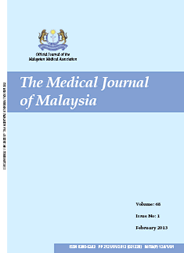MJM, Vol 70 Supplement 1 September 2015
Community alcohol programme in Sabah
NCD Unit, Public Health, Sabah State Health Department
ABSTRACT
Introduction: Alcohol abuse in Malaysia is mainly heavy intake in the form of drinks, underage drinking and driving under the influence of alcohol. This is due to the ready availability of alcohol and cheap price, which is affordable by many. In the state of Sarawak and Sabah on Borneo, the community traditionally drink a homemade rice wine called tuak or tapai in conjunction with harvest celebration and during social or communal gathering. The objective of this study was to identify the pattern of drinking and the level of alcohol consumption in the community.
Method: Alcohol screening programme was conducted at Kampung Bundu Tuhan Kundasang in January 2015. Screening tool used is AUDIT (Alcohol Use Disorder Identification Test) questionnaire, which is a valid screening instrument for detecting hazardous and harmful drinking by the World Health Organization.
Results: A total of 35 respondents agreed to undergo alcohol screening in the community. The respondents group comprised of 77% male and 23% female respectively. 100% of the respondents still consumed alcohol. Hazards of alcohol consumption were directly related to the amount of alcohol consumed. Alcohol consumers were divided into low risk drinking, hazardous drinking, harmful drinking based on AUDIT SCORE. In this screening, 32% of the respondents were low risk drinkers, 54% hazardous drinkers and 14% harmful drinkers.
Conclusion: By conducting screening, we can identify the magnitude of drinking problems in the community. Therefore health education and health promotions on alcohol hazards should be more aggressive in the community.
